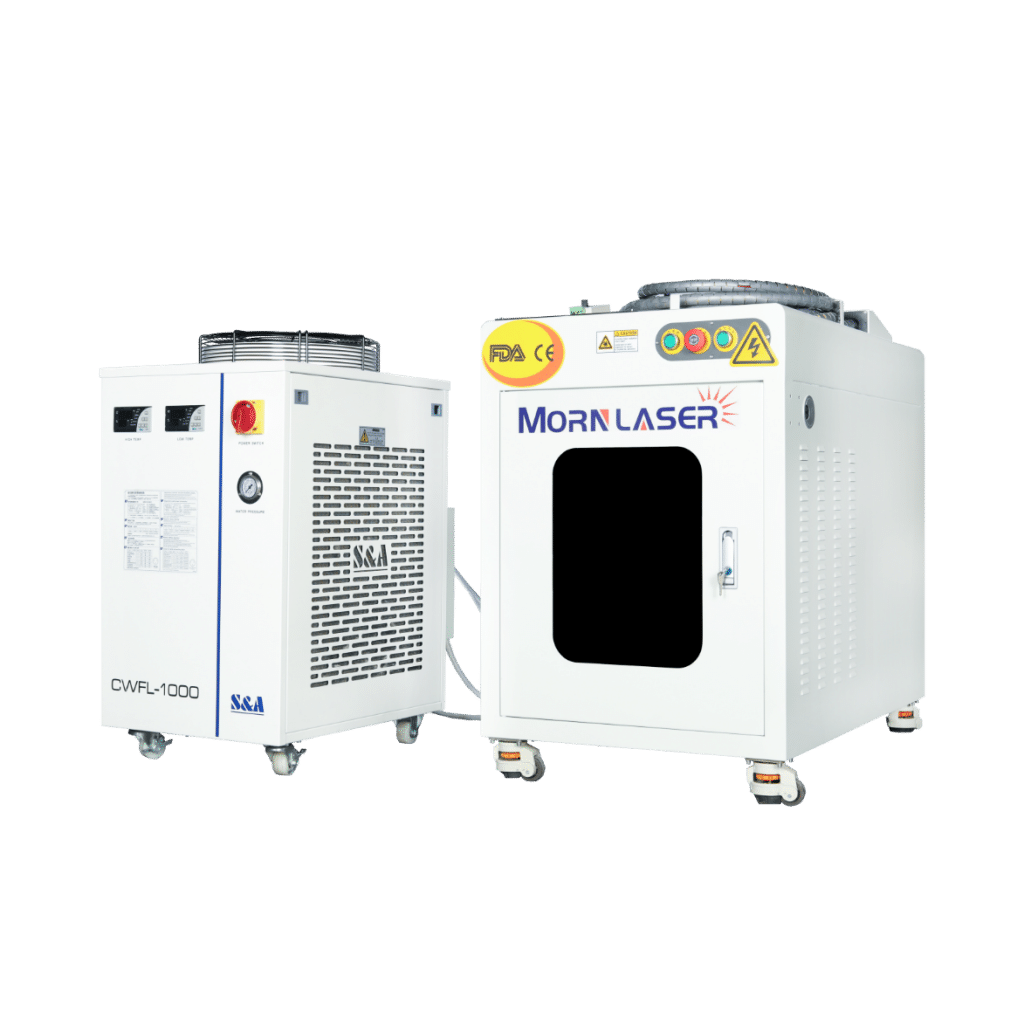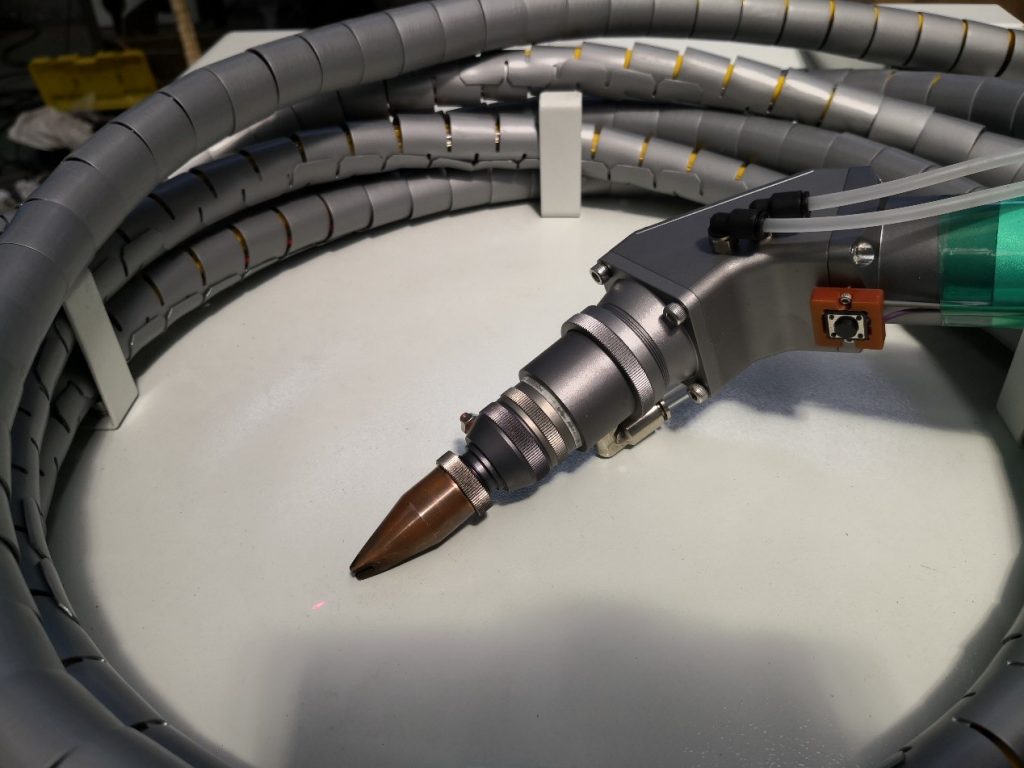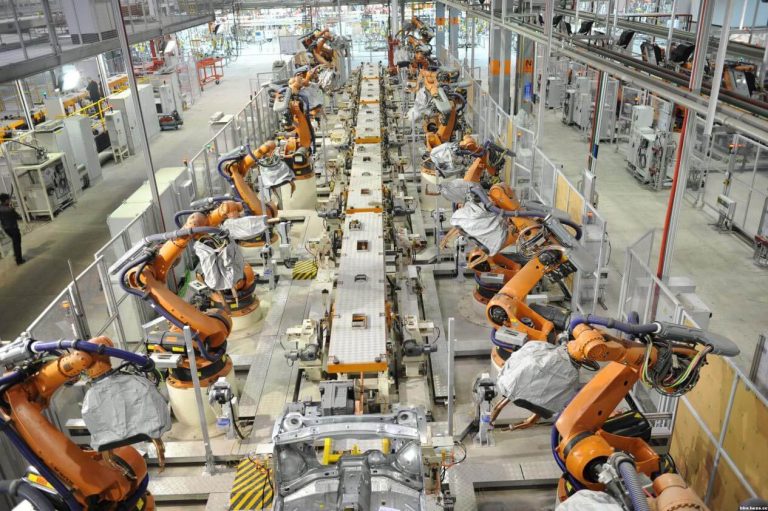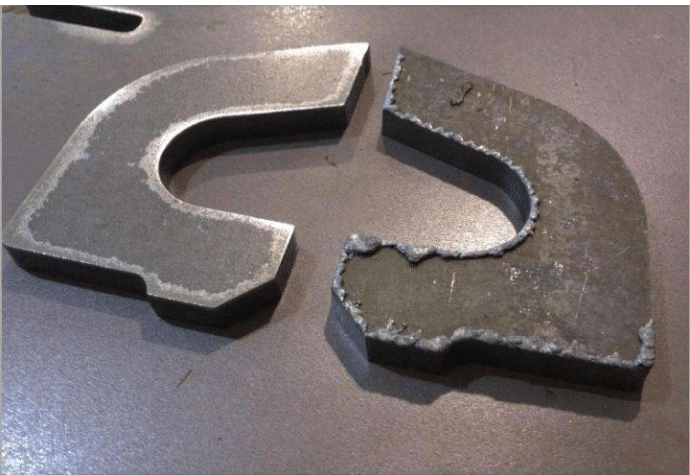On August 27, 2019, Chinese competitor, Zhao Fubo, has managed to clinch the gold medal with 93.53 points in welding competition at 45th WorldSkills Competition. His success has put the Chinese welding team at the top of the welding competition. Congratulations to this young professional and to all other participants! So far, China has won the “three consecutive championships” since it participated in the WorldSkills Competition. This shows that Chinese welding technology has been at the leading level in the world. MORN LASER, as one of the advanced laser equipment manufacturers in China, also witnessed the development of Chinese welding technology. This post will talk about the differences between conventional welding and laser welding processes and the star welding tool of 2019-handheld laser welding machine.
The outline is as below:
- Chinese Welding Master Took Top Spot in Welding Competition at WorldSkills Competition 2019
- Laser Welding Versus Conventional Welding
- 2019 Star Laser Product: Handheld Laser Welding Machine
Table of Contents
Chinese Welding Master Took Top Spot in Welding Competition at WorldSkills Competition 2019
From August 22nd to 27th, the 45th World Skills Competition was held in Kazan, Russia. In the 18-hour competition, Zhao Yubo completed the welding of four modules including assembly, pressure vessel, aluminum alloy structure and stainless steel with rich training experience, skilled technique, and stable mentality, and won the championship with 93.53 points under the judgment of 35 judges from participating countries and regions.
The World Skills Competition is billed as the “Olympics of Skills” and held every two years. It is the world’s highest-ranking, largest and most influential professional skill event, as well as an important platform for members to demonstrate and exchange professional skills. China formally joined the organization since 2010.
So far, China has won the “three consecutive championships” in the welding competition since it participated in the WorldSkills Competition. Such outstanding achievements are the pride of the country and the pride of the Chinese welding industry.
MORN LASER, as one of the advanced laser equipment manufacturers in China, also witnessed the development of Chinese welding technology.
When it comes to welding, arc welding and laser welding are the most common welding processes. Do you know the difference between the two? Let’s have a look at it together.
Laser Welding Versus Conventional Welding
- Conventional welding: TIG and MIG
Traditionally, MIG (Metal Inert Gas) Welding and TIG (Tungsten Inert Gas) Welding are the two most common welding forms. They work by using a shielding gas to create an inert atmosphere around the welding head. This inert atmosphere allows the welds to be isolated from other gases in the surrounding area which helps to stop the welds from becoming porous. An electric arc heats up the metal and metal filler, once melted it joins the material together to create a strong weld.
Metal Inert Gas (MIG) welding uses the heat generated by a DC electric arc to fuse the metal in the joint area. A continuous electrode (the wire) is fed by powered feed rolls (wire feeder) into the weld pool.
TIG welding uses a tungsten electrode to create the electrical arc and a handheld filler is used. Whereas in MIG welding the electrode also acts as a filler.
- What is laser welding and how does it work?
Laser welding, or laser beam welding (LBW) is a highly efficient precision welding method that uses a high energy density laser beam as a heat source. The focused beam is directed to the surface of the part to be welded.
The laser welding process (mainly for sheet metal welding) can be divided into fiber continuous laser welding or YAG pulse laser welding according to the laser category.
The principle of laser welding can be divided into thermal conduction welding and deep penetration welding. The power density of less than 104~105 W/cm2 is for heat conduction welding. At this time, the penetration depth is shallow and the welding speed is slow. When the power density is greater than 105~107 W/cm2, the metal surface is concave into a “keyhole” under the action of heat to form deep fusion welding. The welding speed is fast and the aspect ratio is large.
The principle of thermal conduction laser welding is: laser radiation heats the metal surface to be processed, the surface heat is diffused to the inside through heat conduction, and the workpiece is melted by controlling the laser parameters such as the width, energy, peak power and repetition frequency of the laser pulse to form a specific molten pool. It is suitable for the welding of thin plates.
The deep penetration welding generally uses a fiber-optic continuous laser beam to complete the material welding. The laser beam not only melts the metal, but also produces vapor. The dissipating vapor exerts pressure on the molten metal and partially displaces it. The material, meanwhile, continues to melt. The result is a deep, narrow, vapor-filled hole, or keyhole, which is surrounded by molten metal. As the laser beam advances along the weld joint, the keyhole moves with it through the workpiece. The molten metal flows around the keyhole and solidifies in its trail. This produces a deep, narrow weld with a uniform internal structure. The weld depth may be up to ten times greater than the weld width.
- Advantages of laser welding over conventional welding
Easy operation-Laser welders don’t require great dexterity and skill that conventional welding does. Laser welding works from computer input whereas conventional welding requires somebody to operate the machine.
Higher weld strength– The weld strength is truly better than TIG and MIG Welding as the laser weld is narrow and has an excellent depth-width ratio.
Nearly no distortion- The heated area of the weld doesn’t spread to the rest of the material; thus, no concerns for weld weaknesses due to minimal distortion. It won’t cause distortion and change in the structure of the metal which can result in weaknesses in welds as the use of inert gas will do; and due to rapid cooling, the material can be handled almost instantly after the job is complete.
Aesthetically better weld finishes-More suited to high-value items such as jewelry. Ideal for solenoids and machined components, perfect for medical devices where weld quality is vital for hygiene and precision
Great accessibility-laser welder can weld from any angle of the workpiece, unlike the conventional method which is impossible to use in vertical or overhead positions due to liquidity of the weld
High Precision- Laser welding offers a much more precise weld in comparison to TIG and MIG welding. With 0.025mm precision you will find it hard to match a weld as precise as that.
- Application of laser welding
Laser welding can be used to weld a whole array of metals such as carbon steel, high strength steel, stainless steel, titanium, aluminum, and precious metals. The laser welding machine is widely used in various industries:
Sanitary industry: welding of water pipe joints, reducers, tees, valves and showers.
Glasses industry: precision welding of glasses, such as stainless steel and titanium alloy, and the outer frame.
Hardware industry: impeller, kettle, handle, etc., welding of insulated cups, complex stamping parts and castings.
Automotive industry: engine cylinder head gasket, hydraulic tappet seal welding, spark plug welding, filter welding, etc.
Medical industry: welding of medical instruments, medical equipment, stainless steel seals, structural parts.
Electronics industry: solid-state relay seal welding, welding of connector connectors, welding of metal casings and structural parts such as mobile phones and MP3s. Welding of motor housings and wires, fiber optic connector connectors, etc.
As well as household hardware, kitchen utensils, stainless steel door handles, electronic components, sensors, watches, precision machinery, communications, handicrafts, automotive hydraulic tappets, and other high-intensity industry products welding.
2019 Star Laser Product: Handheld Laser Welding Machine
Since the starting of this year, “Handheld laser welding machine” appeared in various forms in the laser processing circle. It has become a star product in the laser welding market in the first half of the year with its features of convenience flexibility, rapid welding and so on. Here in MORN LASER, we got lots of inquiries on such a useful machine every day and any of our customers now become the fan of the laser welder. Let’s dive into the details of it.
- Most convenient laser welding tool-handheld laser welding machine
The handheld laser welding machine includes a laser welding host and a chiller. The welding host mainly produces a laser beam for welding, consisting of main parts such as power supply, laser generator, optical path part, welding gun, etc. The cooling system provides cooling for the laser generator, typically with a 1-5HP water circulation chiller. Below is a photo of MORN LASER handheld laser welding machine.
Features of the handheld laser welding machine
- Compact, convenient to move freely
- Separate the heat source by the upper and lower layers to ensure the working environment of the laser source
- Equipped with a dual-temperature dual-pump chiller to meet laser full-power continuous output cooling requirements
- The handheld laser welder can be equipped with different weld guns for different welding forms; eg: the wobble welding head has a beam swing range of 0-4mm, which can adapt to wider gaps. See the weld forms created by wobble weld head and common weld head below.

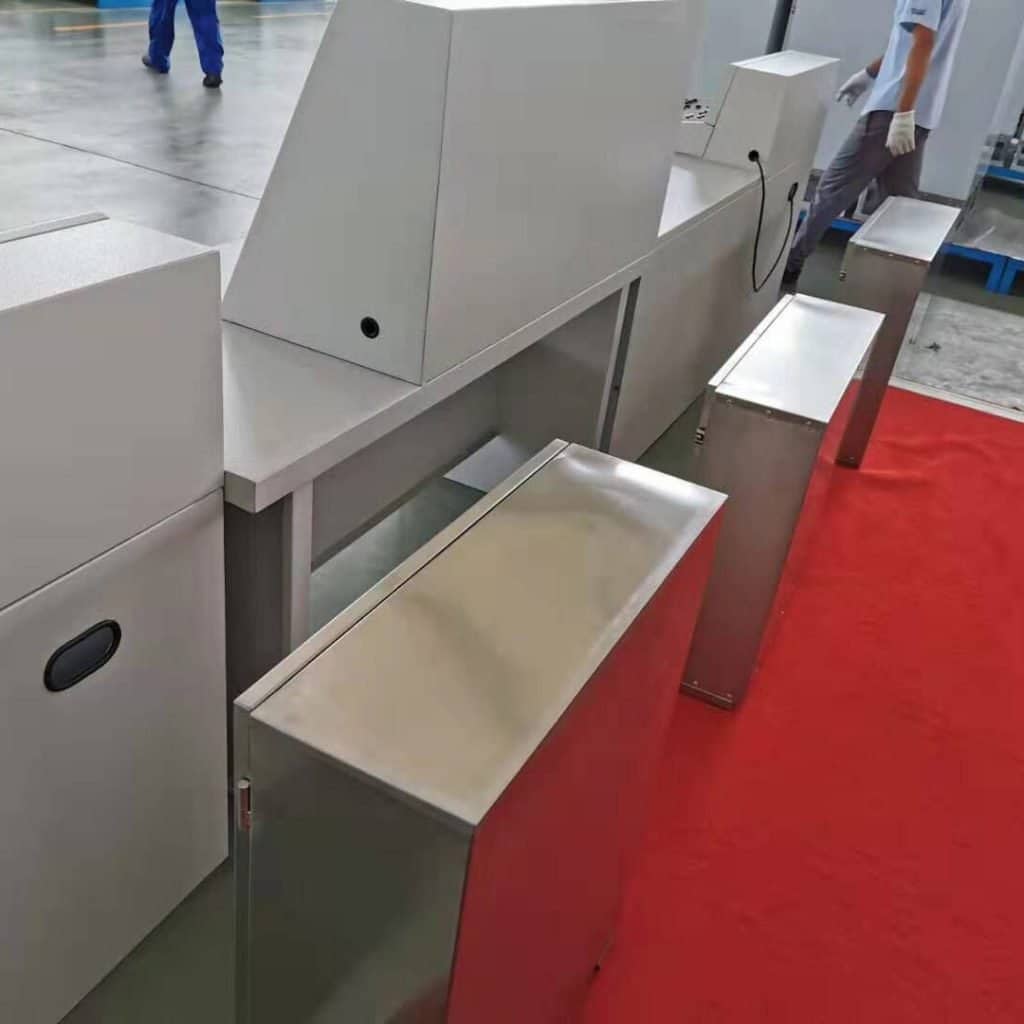
Effect of a weld created by handheld laser welder with wobble head
Effect of a weld created by handheld laser welder with common weld gun
2. Benefits of handheld laser welding machine
Press the button and weld-handheld laser welder is very convenient to operate since it doesn’t need any computer control, only press the button and it will work instantly. No complex skills required. Below is a photo of the weld gun, when the red button is pressed, the welder will work.
Wherever you want to weld-the handheld laser welder replaces the previously fixed light path with a hand-held type, which makes lase welding possible not only in long-distance outdoor operations but also possible for welding from any point and angle of the workpiece. Furthermore, the large workpiece welding, such as cylinder welding and large metal words welding, is no more a problem.
Turn waste to wealth-the laser welder not only can be used to create new products but also be used to repair various metal products of our daily life such as pot, barrel, etc.
3. Video of handheld laser welding machine
This video displays the process of SS, CS, dissimilar materials welding with handheld fiber laser welding machine, the metal parts welding on a rotary attachment is also included.
4. Laser welding at MORN LASER
The handheld fiber laser welding machine fills the blank of hand-held welding in the laser equipment industry.
However, at the early stage of the product launch, due to the unattainable price, it has not been widely accepted by metal fabricators.
MORN LASER, a professional laser manufacturer with a vision of achieving customers, takes the lead in developing this economical and practical laser welding machine, which not only saves costs for customers but also won the long-term trust of customers.
For metal fabricators, it is a great opportunity to surpass your opponents and bring one in house. Early bird gets the worm. Early investment, huge benefit!
So why not tell us what you want to weld? Or discuss the business opportunity of your market with us right now?


